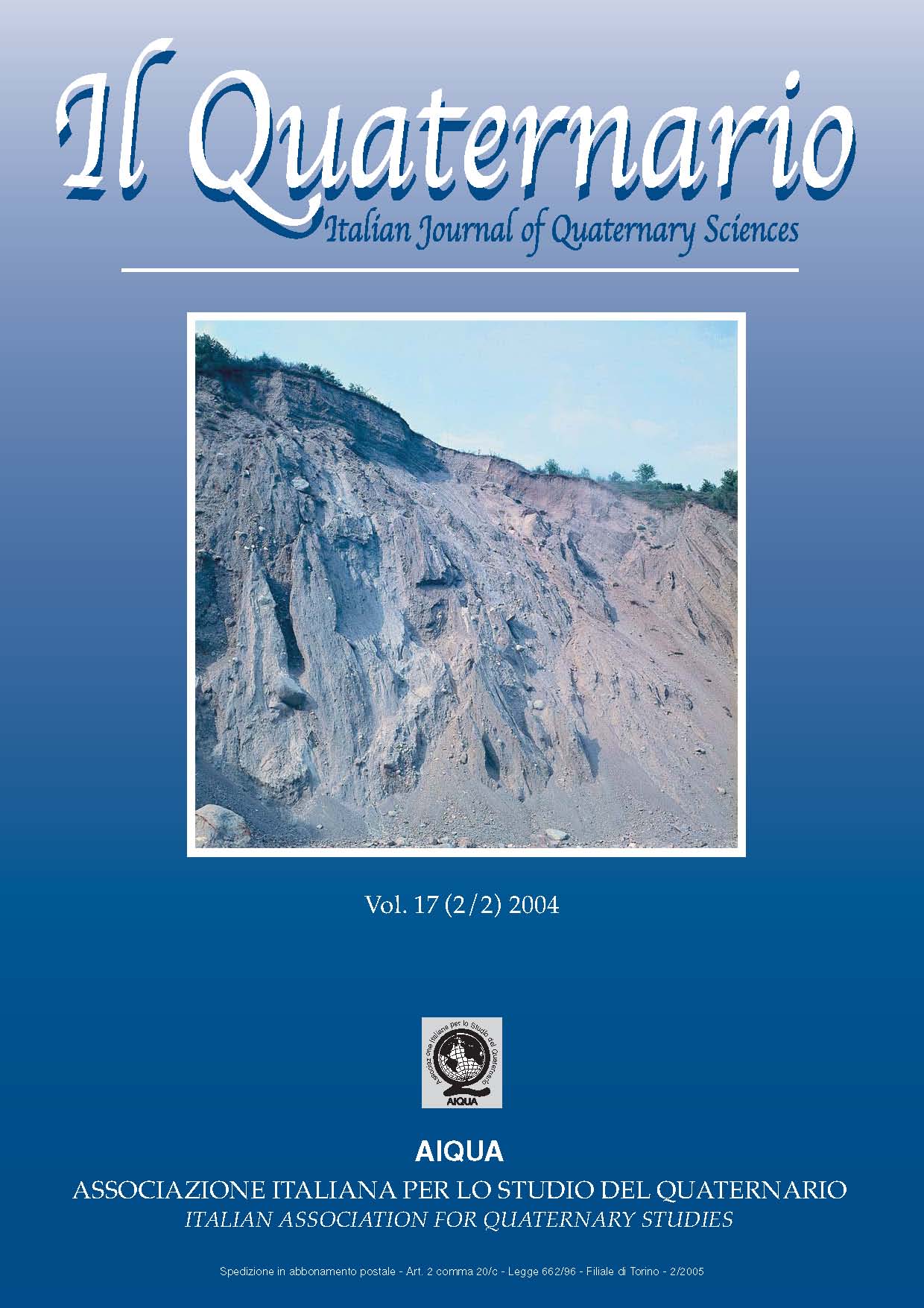DEPOSITI CARBONATICI INFRAPLEISTOCENICI DI TIPO FORAMOL IN SISTEMI DI SCARPATA (SALENTO - ITALIA MERIDIONALE)
Main Article Content
Abstract
Tropeano M., Spalluto L., Moretti M., Pieri P. & Sabato L., Lower Pleistocene foramol-type carbonate deposits in slope
systems (Salento - southern Italy). IT ISSN 0394-3356, 2004.
Along the eastern Salento coast (Southern Italy), Cretaceous to Quaternary carbonates crop out on a 100 m high escarpment that connects a wide and relatively flat area to the Otranto Strait (Ionian Sea). Along the escarpment, faulted and tilted Cretaceous and Eocene limestones record deposition in shallow-marine and marginal carbonate environments. Younger carbonates disconformably overlie this substratum and they formed when the region was partially submerged. Accordingly, Priabonian to Messinian carbonates which crop out along the escarpment were interpreted as slope deposits linked to reef systems developed on the margin of the top area, while lower Pleistocene carbonates cropping out at the base of the same escarpment were considered coastal in origin and formed during the uplift of the region.
Stratigraphic and sedimentologic studies carried out on these lower Pleistocene carbonates demonstrate that also these deposits
should be considered as slope deposits. The studied carbonates are foramol-type ones and discontinuously crop out along the lower
part of the escarpment. They show a variable thickness (from a few meters up to several tens) and often exhibit a fan morphology; they correspond to small isolated bodies (up to a few km2 wide) developed in some indentations of the escarpment, and are composed of coarse skeletal grains mainly deposited via slumpings or grain flows. Successions are characterized by long clinobeds cut by slump scars downward passing to gullies; backsets, slumps and chaotic deposits fill these erosional features. Clinobeds are alternatively made up of molechfor and rodhalgal facies which respectively record resedimentation by grain flows of shallow marine carbonates developed on top of the region and along-slope carbonate production.
Depositional systems correspond to small shallow-marine aprons whose discontinuous distribution along the escarpment (inside
indentations) should be considered an original feature.
The idea that these deposits record the Sicilian sea-level along the escarpment should be abandoned as they are not coastal deposits.
The studied deposits should be correlated to the Calcarenite di Gravina Formation which in other areas of the Apulian Foreland (which
the Salento region belongs to) are considered as the deposits linked to the subsidence induced by the estward migration of the southApennines orogenic system. The Quaternary uplift of the Salento region should be begun after the deposition of the studied slope deposits, as indicated also by a series of middle-upper Pleistocene marine terraces which start at heights higher than those ones of the studied deposits.
Article Details
Section

This work is licensed under a Creative Commons Attribution-NonCommercial-NoDerivatives 4.0 International License.
The Author grants usage rights to others using an open license (Creative Commons or equivalent) allowing for immediate free access to the work and permitting any user to read, download, copy, distribute, print, search, or link to the full texts of articles, crawl them for indexing, pass them as data to software, or use them for any other lawful purpose.

